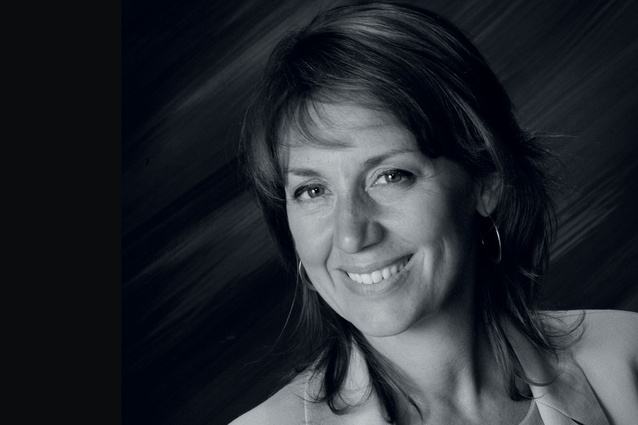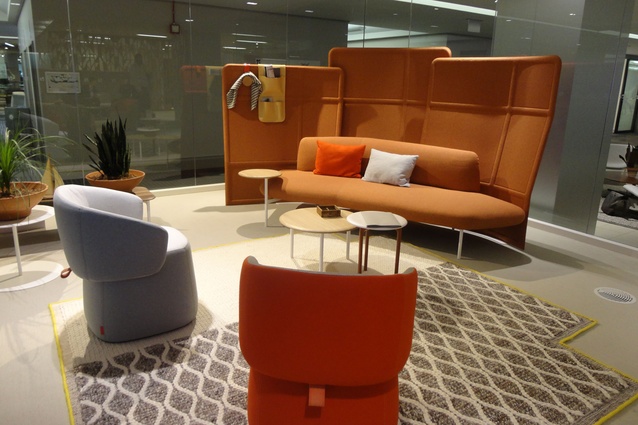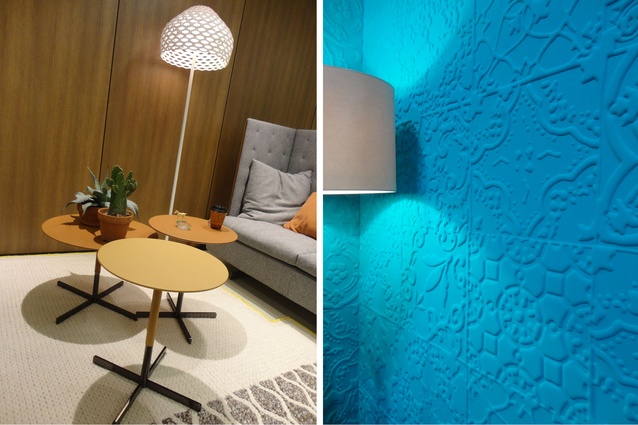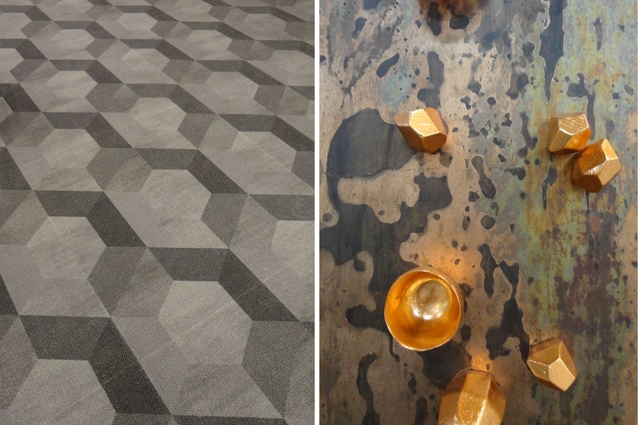Renee Hytry Derrington
Group Vice-President of Design for Formica Renee Hytry Derrington and her team are usually trekking through the world’s premier design fairs, uncovering and documenting early trends. Interior caught up with her in Christchurch to chat about their method.
Interior: Part of your job involves recognising early patterns and nascent trends in the global interior design market and converting those into products. What is your process?
Renee Hytry Derrington: [My team and I] are armed with cameras continuously and we are all very close and share information freely. We travel all the time and just pick up on cues, and it’s about triangulating all those cues. We first do an internal sifting of all the information and, every two years we create what we call the ‘voice of customer concept document’ and that puts everything that we see together and that’s what we use to research and have our customers validate. Also, we annually create something called ‘transvision’ which is more about [what we perceive will be] the future so we take the ‘transvision’, what we see around the world, combine them together for a ‘voice of customer concept document’ that we use
to go out and talk with the architects and designers one on one.
Interior: Is that being done by a sales team?
RHD: I want my designers to do it directly because I want them to get a gut. I call it the design gut, meaning they have an understanding bigger than their own perceptions. With that information, we, in a sense, rate and rank the concepts that we talk with all the designers about. That then turns into our prototyping phase and, in that prototyping phase we actually create sample boards that have real laminates or whatever material we’re working on. We then ask a separate group of designers to rate and rank the designs for us and that gives us the recommendation for what we would ask our companies to actually introduce. So it’s a commercial launch or a commercially focused launch.
Interior: How do you select the types of architects and designers with whom you work?
RHD: We work with our local sales teams and ask them to hand pick the types of designer that we’re looking for, depending on whatever the focus of that launch is and sometimes we ask for style leaders; sometimes we ask for people that work with the mass market. Sometimes we ask for retail, hospitality or commercial interiors. It depends on what the market direction is for the year… actually, a lot of that ties into economic data: knowing which market segment is going to be stronger or weaker because that’s where we, as a manufacturer, want to be able to make the products work for the growth areas.
Interior: So there is a certain degree of economic forecasting in your design process.
RHD: Exactly. The marketing and design people come together when we set the briefs and the design people are keeping track of the style shifts and then the marketing folks will feed in the economic data of where they want us to focus our design development and that then becomes the focus of where we take our concepts into research. We can do anywhere between 400 and 600 interviews globally, all at the same time; all of the data statistically comes in and I can actually look and see what kind of décor, colours, structure, wood grain, etc. surveys best with say… healthcare designers in Singapore versus LA, from Washington DC to London and that data is actually very useful.
Interior: So you are gathering local information for a global product. How do you turn those local design predilections into products you are hoping will be marketable globally?
RHD: Some of my markets are dependent on their economic states. Some are more daring and will allow more of the décor things to filter through and other markets that I work with might be hesitant and want to go for the safe thing so the economics actually come into play at the end. When we go into the marketing groups and they look over the work and the proposals, if they’re economically more flush – like right now, the American market is much more optimistic with their economic background – so we’re able to take more chances now on that market versus in Europe, which has been really depressed for a long time. So our tendency is to take a safer palette into that market place. It used to be that Europe was considered the mecca of all new designs and cool things and everybody ran to Milan and EuroCucina and to the furniture fairs there. It was because the European market probably showed more diversity because there were still individual countries that had their own manufacturing bases. They would sell to their own customers so they were dealing with smaller lot sizes and, therefore, there’s a lot more stuff in Europe. [For example] German companies were producing German products for German customers; it wasn’t all one Europe. There were very distinctive styles, techniques, etc; again, that’s lessening as the economy has forced them to do so. Whereas the Americans have one big huge market and it’s all more homogenous. Asia used to follow the Americans and then they started following style trends in Europe but now they’re starting to develop their own style which is kind of interesting.
Interior: How is technology and the digital revolution changing this?
RHD: Accessibility to information is allowing even smaller companies, or countries, or movements to pop up and be accepted. That’s the beauty of the internet; further away localities actually have the ability to promote their aesthetics globally













